Kingsgrove Branch:
Schnap Electric Products Blog
Schnap Electric Products Blog Posts
Cat6a vs Cat6
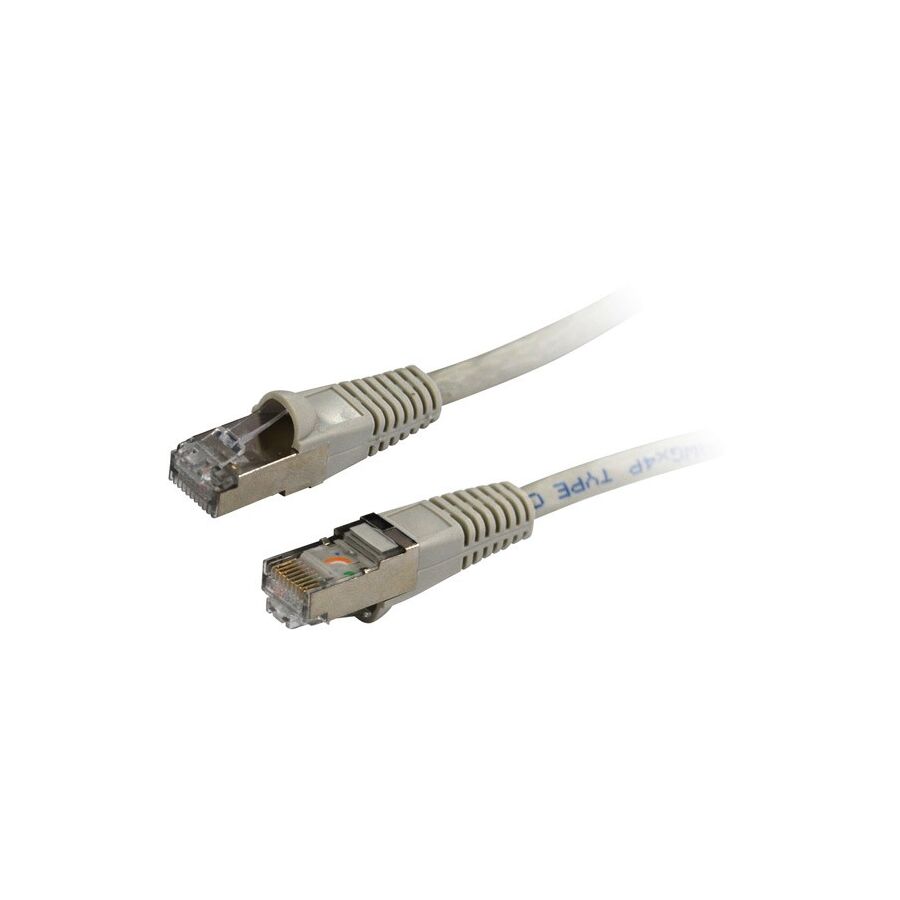
G'day! If you are planning a new build, a renovation, or just finally getting around to fixing the Wi-Fi dead zones in the back of the house, you are probably looking at data cabling. With the NBN speeding up and our file sizes getting bigger, relying on wireless just doesn't cut the mustard for serious gaming or home offices anymore.
When you start looking at the options, the biggest question most Aussies face is the battle of cat6a vs cat6. Is it worth paying the extra coin for the 'a' version, or will standard Cat6 do the job? Let's break down the technical differences so you can decide what is best for your place.
The Standard Choice: Category 6 (Cat6)
Category 6 is currently the most common cable used in Australian residential installs. It is a fantastic cable that handles the needs of 99% of households right now.
The Specs: Cat6 is rated for bandwidths up to 250 MHz. It is designed to deliver 1 Gigabit speeds (1000 Mbps) up to 100 metres.
The Capability: Many people don't realise that Cat6 can actually handle 10 Gigabit speeds, but there is a catch. It can only maintain that speed over shorter distances, usually up to about 37 to 55 metres, depending on how much electrical interference is nearby. For a standard single-storey Aussie home, this is often plenty to get high speeds from the modem to the bedroom.
The Performance Heavyweight: Category 6a (Cat6a)
The 'a' stands for Augmented. Cat6a is the beefed-up big brother, designed to handle serious data loads and eliminate interference.
The Specs: Cat6a doubles the bandwidth to 500 MHz. It is built to guarantee 10 Gigabit speeds over the full 100-metre run.
The Build: To achieve this, Cat6a is physically different. It is thicker, heavier, and much stiffer than Cat6. This is because the twists in the copper pairs are tighter, and it often features significantly more shielding to prevent "Alien Crosstalk" (interference from other cables bundled next to it). If you are running a home server, editing 8K video, or you just want to make sure your house is ready for technology 20 years from now, this is the cable to look at.
Making the Decision
When weighing up cat6a vs cat6, consider the installation difficulty and your future needs.
Because Cat6a is thicker and less flexible, it is harder to work with. It takes up more space in conduits and requires special attention when terminating the ends. However, if you are running cables in a bundle through a tight roof space alongside power cables, the superior shielding of Cat6a offers better protection against signal degradation.
If you are on a budget, Cat6 is still a very reliable choice. But if you want the ultimate peace of mind and top-tier performance, Cat6a is the way to go.
Why You Must Use a Licensed Cabler
It is important to remember that data cabling is not a DIY job in Australia. Under the Telecommunications Act, any fixed cabling that connects to the telecommunications network (which includes your home LAN) must be installed by a registered licensed cabler.
A professional knows how to handle the bend radiuses of Cat6a without damaging the internal structure. They will also ensure that the wall plates and patch panels match the category of the cable to avoid creating a bottleneck. A licensed professional will typically source their materials from a reputable electrical wholesaler to ensure the cable meets Australian fire and safety standards, ensuring your insurance remains valid and your family stays safe.
Sourcing the Best Gear for Your Network
Whether you decide to stick with the flexible Cat6 or upgrade to the robust Cat6a, the quality of the cable matters. Using cheap copper-clad aluminium cable will result in poor speeds and connection dropouts.
Schnap Electric Products is a trusted supplier for the trade, stocking high-performance data solutions for every application. They offer premium rolls of both Cat6 and Cat6a cable, along with the specific jacks, patch panels, and wall plates required for each type. By providing the trade-quality components you would expect to find at a major electrical wholesaler, Schnap Electric ensures your home network is fast, compliant, and built to last. For a connection you can rely on, choose Schnap Electric for your data needs.
Ethernet Cable Cat6
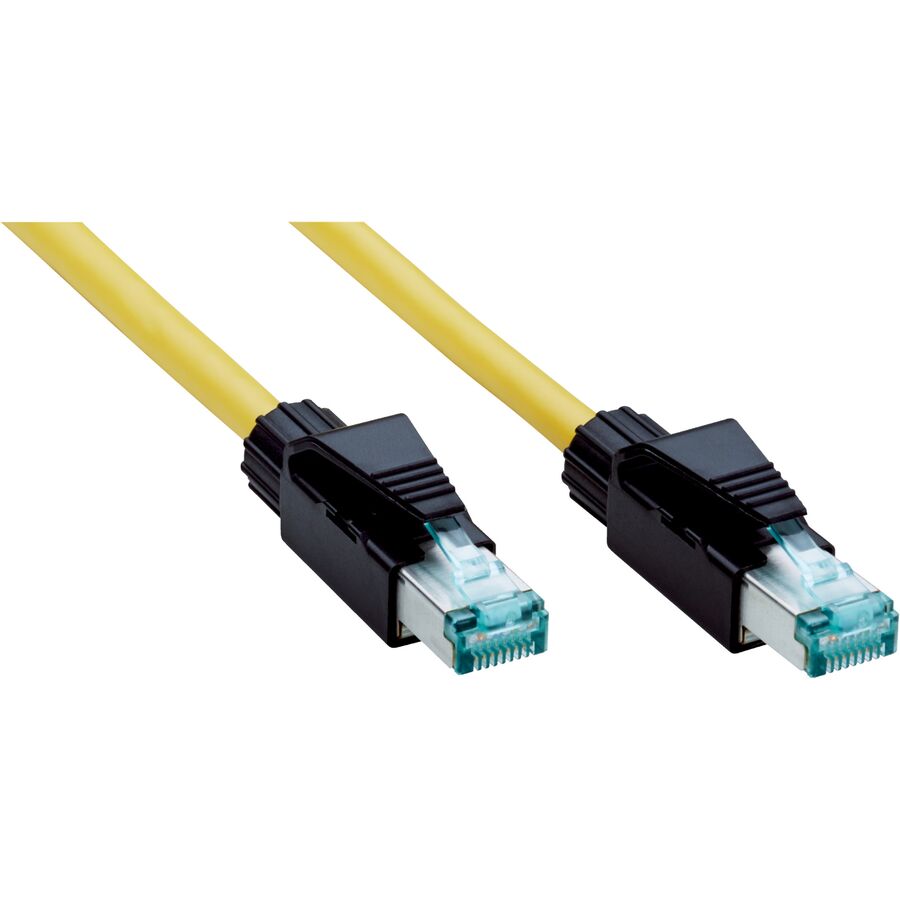
G'day! We all love the freedom of Wi-Fi, but there is nothing more frustrating than the internet dropping out right in the middle of a movie or a crucial video call. With the NBN offering faster speeds and our homes filling up with smart devices, relying solely on wireless connections can leave you lagging. To get the most out of your connection, you need a solid backbone, and that means installing ethernet cable cat6.
While it might look like just another wire, upgrading your home network to Cat6 is one of the smartest moves you can make to future-proof your property and ensure your data flows freely.
What is Cat6 and Why Do You Need It?
Category 6, or Cat6, is the current industry standard for twisted pair cabling used in Ethernet networks. Compared to the older Cat5e standards found in many existing Aussie homes, ethernet cable cat6 is built for performance.
The main difference lies in the construction. Cat6 cables are wound tighter than their predecessors and usually feature a plastic separator or spline running down the centre. This spline keeps the internal pairs of wires apart, significantly reducing "crosstalk" (signal interference) and system noise. The result is a cable that can comfortably handle Gigabit speeds (1000 Mbps) and even support 10 Gigabit speeds over shorter distances (typically up to 55 metres).
The Benefits of Hardwiring
You might be wondering if running cables is worth the effort when wireless technology is improving. The answer is a definite yes.
- Consistency: Wi-Fi signals fluctuate based on distance, walls, and interference from other devices. An ethernet cable cat6 connection provides a dedicated, stable path for your data.
- Low Latency: For gamers, every millisecond counts. Hardwiring consoles and PCs ensures the lowest possible ping, giving you a competitive edge.
- Bandwidth: With 4K streaming becoming the norm, a hardwired connection ensures your TV gets all the bandwidth it needs without slowing down the Wi-Fi for everyone else on their phones.
Sourcing the Right Gear
When planning a network upgrade, quality matters. You do not want to go to the trouble of running cables through your roof space only to find they are made of inferior materials that degrade the signal.
Professional installers will always visit a reputable electrical wholesaler to source their cabling. They know that trade-grade cable is made with solid copper cores rather than cheap copper-clad aluminium, ensuring the cable meets Australian standards for fire safety and performance. Using the right quality cable is the first step in building a reliable network.
Installation Rules in Australia
This is the most critical point for homeowners. In Australia, data cabling is regulated telecommunications work. While you are free to plug a loose patch lead from the wall to your laptop, the installation of fixed cabling inside walls, ceilings, or floors is strictly prohibited for DIYers.
You must engage a registered licensed cabler to install your permanent ethernet cable cat6 runs. They have the training to ensure the data cables are adequately separated from electrical wiring to prevent interference and dangerous voltage crossovers.
Get Professional Data Solutions
To build a network that lasts, you need components you can trust. A high-speed cable needs high-speed jacks and patch panels to maintain performance from end to end.
Schnap Electric Products is a trusted supplier for the trade, offering a comprehensive range of data networking equipment. They stock high-quality rolls of ethernet cable cat6, along with the matching data jacks, wall plates, and patch leads required for a complete fit-out. By providing the same professional-grade equipment you would find at a major electrical wholesaler, Schnap Electric ensures that your home network is robust, compliant, and ready to handle the demands of modern internet speeds. For a connection that doesn't let you down, chose the quality range from Schnap Electric.
Cat6 Connector
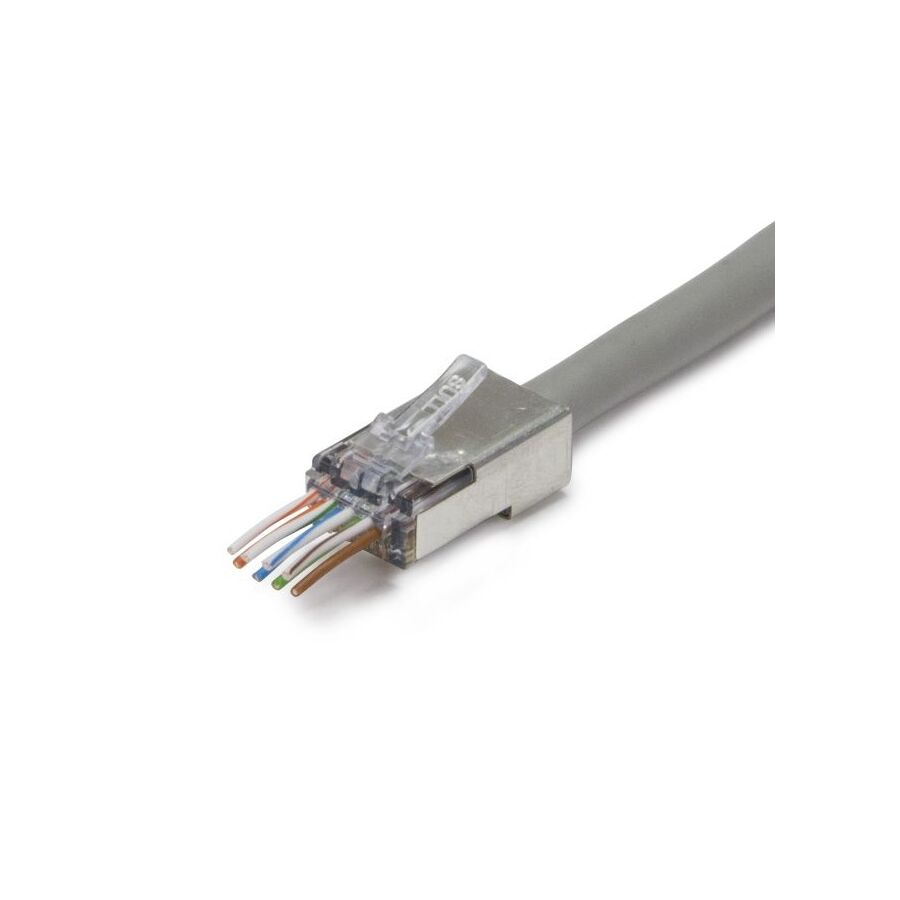
G'day! You have gone to the trouble of upgrading your NBN plan and running high-quality cable through the roof, but your internet is still lagging. Before you blame the service provider, take a close look at the ends of your cables. The humble cat6 connector is often the most overlooked part of a home network, yet it is the critical gateway for your data.
While they all look like simple plastic clips, using the wrong connector on a high-speed cable is like putting bicycle tyres on a V8 ute. To get the Gigabit speeds you are paying for, you need to understand why these specific plugs are essential for a reliable connection.
What Makes a Cat6 Connector Different?
Technically known as an RJ45 plug, the connector is what plugs into your router, switch, or PC. However, not all RJ45 plugs are created equal.
A specific cat6 connector is engineered to match the thicker copper wires found in Category 6 cabling. Cat6 cable is physically bulkier than the older Cat5e because it has thicker insulation and often a plastic spline to reduce interference. If you try to jam a Cat6 cable into an old Cat5e plug, the wires simply won't fit side-by-side.
To solve this, a cat6 connector usually features a staggered pin layout (up and down) rather than a flat row. Many also come with a separate "load bar" or insert. This tiny piece of plastic guides the wires into the correct position before they are inserted into the plug, ensuring a perfect crimp and maintaining the twist of the pairs right up to the contact point. This precision is vital for preventing data loss and maintaining speed.
Why Quality Components Count
It is tempting to buy a bag of cheap plugs online, but this is often a false economy. Poorly manufactured connectors can have weak retaining clips that snap off or gold plating on the contacts that is too thin, leading to oxidation and signal failure over time.
Professional installers know that a network is only as strong as its weakest link. That is why they source their gear from a dedicated electrical wholesaler rather than a budget reject shop. Trade-quality connectors ensure a solid mechanical connection and proper conductivity, which translates to a stable internet connection for your home office or gaming setup.
The Rules on Installation
If you are making a "patch lead" (a loose cable that connects your wall socket to your computer), you are free to crimp your own cat6 connector at home. It can be a fiddly job, but with the right crimping tool, it is a handy skill to have.
However, if you are terminating a connector onto a cable that runs inside a wall, ceiling, or floor, the rules change. In Australia, fixed cabling is regulated telecommunications work. This must be performed by a registered licensed cabler.
A professional cabler has the training to terminate these connectors correctly to the T568A or T568B standard. They ensure the cable is not crushed or kinked during installation, which would ruin the high-speed capabilities of the Cat6 infrastructure.
Get the Right Gear for the Job
If you want a network that flies, you need components built for performance. Using the correct connector ensures that your expensive Cat6 cable actually delivers Cat6 speeds.
Schnap Electric Products is a premier supplier for the trade industry, stocking everything required for a professional data fit-out. They offer high-quality cat6 connector packs, including two-piece plugs with load bars for easy termination, as well as the appropriate crimping tools and strain relief boots. By supplying the same high-standard equipment found at any major electrical wholesaler, Schnap Electric helps ensure your data connections are secure, fast, and built to Australian Standards. For a reliable connection every time, grab your data gear from Schnap Electric.
Cat6 Patch Cable
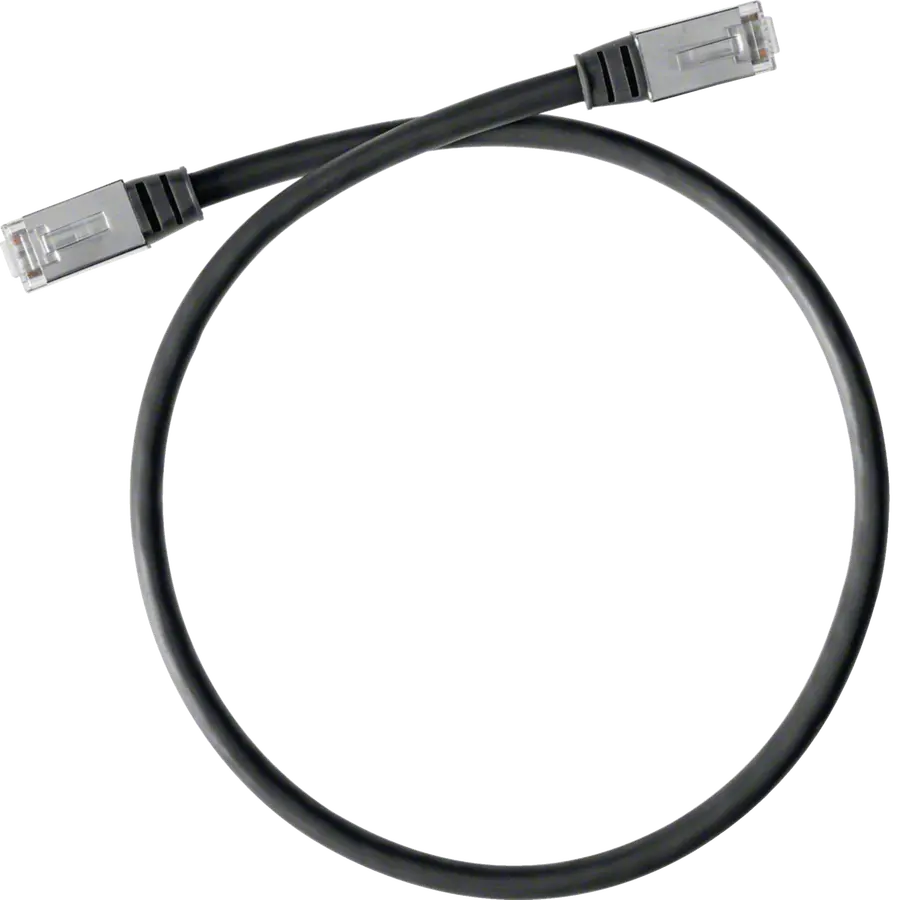
G'day! We invest a lot of money in high-speed NBN plans, top-tier routers, and expensive gaming consoles, yet we often rely on the cheapest, nastiest cable we can find to connect them all. If you are suffering from lag, buffering, or dropouts, the problem might be sitting right behind your computer. Replacing your old leads with a quality cat6 patch cable is one of the cheapest and most effective upgrades you can make to your digital life.
While Wi-Fi is convenient for your phone, nothing beats a physical cable for stability. Whether you are working from home or streaming 4K movies, ensuring the final link in the chain is up to scratch is essential for getting the speeds you pay for.
What is a Cat6 Patch Cable?
A cat6 patch cable is the flexible lead used to connect a device to a network. You use them to plug your modem into the wall socket, your router into the NBN box, or your PC into a switch. Unlike the stiff, solid-core cable that runs inside your walls, a patch cable is made with stranded copper conductors. This makes it flexible, durable, and able to withstand being bent around the back of a desk without snapping the internal wires.
Category 6 (Cat6) is the current standard for these leads because it supports Gigabit speeds (1000 Mbps) and provides higher bandwidth (250 MHz) than the older Cat5e cables. This means it can handle more data traffic at once, which is vital in a modern home full of smart devices.
Why Quality Matters
Not all cables are created equal. A cheap cable might look the same on the outside, but inside it could be using thin copper or even aluminium, which degrades the signal.
When a professional data installer kits out a server rack, they do not use budget cables. They head to a reputable electrical wholesaler to source leads that meet Australian Standards. High-quality patch cables feature gold-plated contacts on the RJ45 plugs to prevent corrosion and ensure a clean connection. They also have proper strain relief boots to stop the cable breaking at the plug end. Using a quality cable ensures that you are getting the full speed your hardware is capable of delivering.
DIY vs The Pros
It is important to understand the difference between "patching" and "cabling" in Australia.
Patching (DIY Friendly): You are 100% allowed to buy a cat6 patch cable and plug it into your devices. This includes running a lead across the floor or behind a cabinet. It is plug-and-play.
Fixed Cabling (Pro Only): If you want to hide that cable inside a wall, ceiling, or floor cavity, you must stop. That is classified as fixed cabling. In Australia, this work must be done by a registered, licensed cabler. They ensure the data cable is separated from electrical wiring to prevent interference and safety hazards.
When to Use Cat6 Patch Leads
You should use these cables for any device that stays in one spot. This includes:
- Smart TVs: For buffer-free 4K streaming.
- Gaming Consoles: To lower your ping and reduce lag.
- Desktop Computers: For stable video conferencing and large file downloads.
- Mesh Wi-Fi Nodes: Connecting your mesh points via cable (backhaul) significantly improves Wi-Fi speed throughout the house.
Upgrade Your Connections with Schnap Electric
If you are ready to ditch the lag and get your network running smoothly, you need gear you can trust. Flimsy cables are just a headache waiting to happen.
Schnap Electric Products is a premier supplier for the trade industry, offering a wide range of data solutions. They stock high-performance cat6 patch cable options in various lengths and colours to keep your setup tidy and fast. By providing the same professional-grade equipment you would find at a major electrical wholesaler, Schnap Electric ensures your home or office network is built on a solid foundation. For a reliable connection that stands the test of time, grab your data gear from Schnap Electric.
Heat Lamps
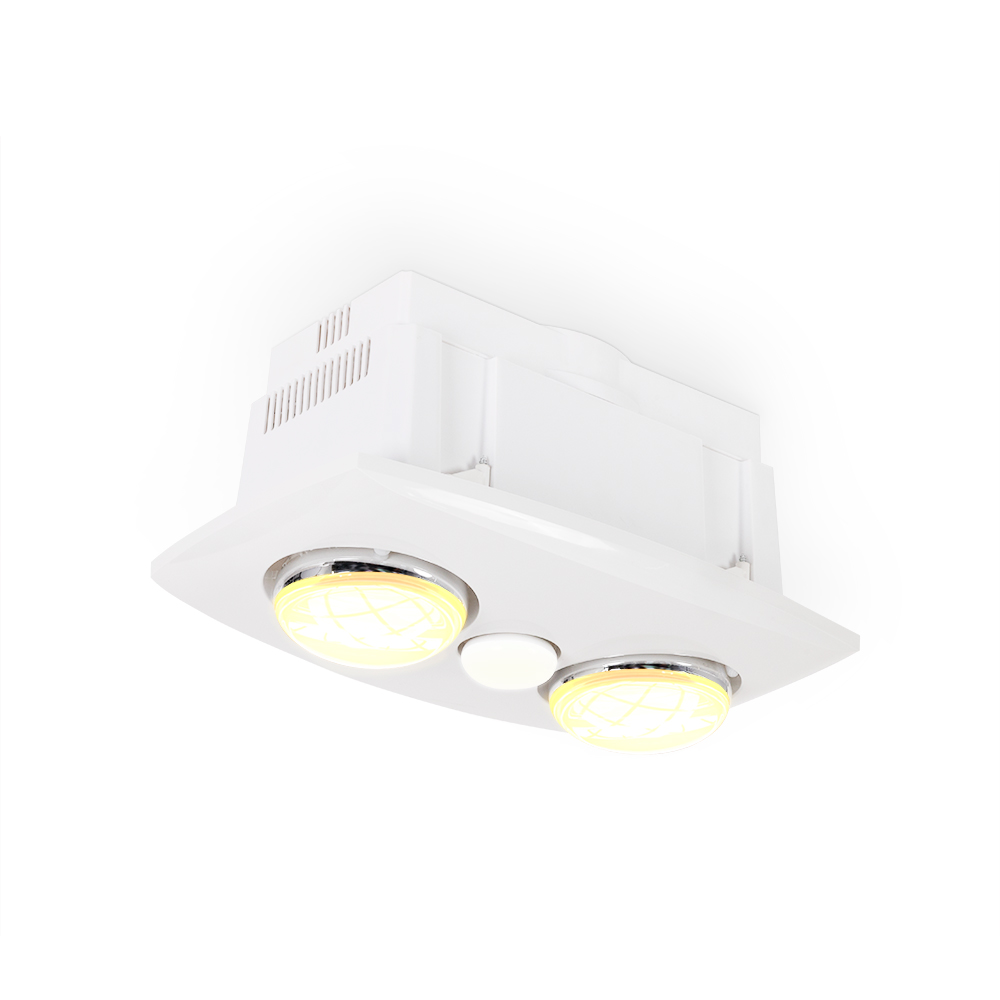
G'day! We have all been there. It is the middle of July, you have just stepped out of a steaming hot shower, and the bathroom air hits you like a tonne of bricks. You do the frantic towel dance, shivering while you try to get dry as fast as possible. It is a classic Aussie winter struggle, but it is one that is easily fixed with the right technology.
For decades, the most effective solution for bathrooms across the country has been heat lamps. Unlike standard heaters that take ages to warm up the air in a room, these clever globes provide instant relief, making them a non-negotiable addition to any comfortable home.
How Do They Actually Work?
It is not magic, it is infrared. Heat lamps are designed to emit infrared radiation, which is a form of radiant heat. Think of it like the feeling of the sun on your face on a cold day. The air around you might still be chilly, but your skin feels warm because it is absorbing the energy directly.
This is why they are so perfect for bathrooms. You do not need to wait for the whole room to heat up. The second you flick the switch, the heat lamps beam warmth directly onto you. It is efficient, targeted, and incredibly comfortable when you are wet and cold.
The 3-in-1 Solution
While you can install standalone heaters, the most popular way to utilise heat lamps in an Australian home is via a 3-in-1 bathroom unit. These fixtures combine the heating bulbs with a central light and an exhaust fan.
This setup is brilliant for a few reasons. Firstly, it saves ceiling space. Secondly, it ensures you have adequate ventilation to stop mould growing on your expensive tiles. And finally, it positions the heat source right where you stand to dry off. Most units come with either two or four lamps, depending on the size of your room and how much of a freeze-baby you are.
Not Just for the Bathroom
While they are a staple indoors, heat lamps are also becoming massive for outdoor entertaining. We love our alfresco living, but once the sun goes down, it can get a bit nippy.
Heavy-duty electrical heaters using infrared tubes are the modern answer to the patio gas heater. They mount up high on the wall or ceiling, out of the way, and beam heat down onto your dining table or lounge setting. It allows you to extend your BBQ season right through autumn and into winter without everyone needing to wear a puffer jacket.
Professional Installation is Essential
Whether you are putting a 3-in-1 in the ensuite or mounting a heater on the back deck, this is strictly a job for the professionals. These units draw a significant amount of power and involve working with 240V mains electricity, often in damp environments.
In Australia, it is illegal to perform your own fixed wiring work. You must engage a licensed electrician to install your heat lamps safely. A professional will ensure the circuit can handle the load and that the fitting is installed with the correct clearance from timber beams and insulation to prevent fire hazards. They will usually source their components from a trusted electrical wholesaler to ensure that everything from the heat-resistant cabling to the switches meets strict Australian Standards.
Get Quality Gear from Schnap Electric
If you want that hotel-level comfort in your own home, you need reliable components that won't let you down when the mercury drops. Cheap globes blow easily and don't put out enough warmth.
Schnap Electric Products is a premier supplier for the trade industry, stocking a massive range of heating and lighting solutions. As a supplier with a range as comprehensive as any major electrical wholesaler in the country, they offer high-performance heat lamps, complete 3-in-1 bathroom units, and robust outdoor heating options. By choosing trade-quality gear from Schnap Electric, you ensure your home stays warm, safe, and comfortable all year round.
Bathroom Heat Lamps

G'day! There is nothing quite as jarring as stepping out of a steaming hot shower on a frosty July morning only to be hit by the icy air of the bathroom. The tiles are cold, the mirror is fogged up, and you find yourself doing a frantic dance to get dry and dressed as quickly as possible.
For Australian homes, especially those built without central heating, bathroom heat lamps are the most effective solution to this daily struggle. Unlike standard heaters that try to warm the air in the entire room, these lamps provide instant, radiant comfort exactly where you need it.
Understanding Radiant Heat
The magic behind bathroom heat lamps lies in infrared technology. Instead of blowing hot air around the room like a fan heater, which can take a long time to be effective, infrared lamps emit radiant energy.
This energy travels through the air and converts to heat only when it hits a solid object—in this case, you. This means that the second you flick the switch, you feel the warmth on your skin. It is efficient and direct, making it the perfect choice for bathrooms where you generally only need heating for short periods while drying off.
The Popular 3-in-1 Combination
While standalone heat lamps are available, the standard for most modern Aussie renovations is the 3-in-1 bathroom unit. These clever fixtures combine bathroom heat lamps, a central LED light for general illumination, and an exhaust fan.
This combination is brilliant for a few reasons. Firstly, it saves valuable ceiling space by grouping all essential services into one neat unit. Secondly, and perhaps most importantly, it ensures that while you are staying warm, the exhaust fan is removing moisture from the room. This ventilation is critical for preventing mould growth and protecting your paintwork and cabinetry from steam damage. Depending on the size of your room, you can generally choose between units with two heat lamps for ensuites or four heat lamps for larger family bathrooms.
Installation and Safety
It is vital to remember that installing these units involves working with 240V mains power in a damp environment. This is strictly not a DIY task. In Australia, all fixed wiring work must be carried out by a licensed electrician.
A professional installer will ensure that the unit is positioned correctly to maximise the effect of the bathroom heat lamps while maintaining safe clearances from timber framing and insulation in the roof cavity. They will also ensure the exhaust is ducted correctly to the outside atmosphere. When planning your installation, your tradesperson will usually source high-quality, compliant units from a trusted electrical wholesaler to ensure the product meets Australian Safety Standards and is built to withstand the humidity of a bathroom environment.
Upgrade Your Bathroom with Schnap Electric
If you are ready to say goodbye to the winter shivers, you need reliable heating solutions that are built to last. Cheap globes and flimsy units often fail quickly under daily use.
Schnap Electric Products is a premier supplier for the trade industry in Australia. They stock a comprehensive range of bathroom solutions, including high-performance 3-in-1 units and durable replacement bathroom heat lamps. By supplying the same trade-quality equipment you would expect to find at a major electrical wholesaler, Schnap Electric ensures your bathroom remains a warm, well-ventilated, and comfortable sanctuary all year round. For the best in bathroom comfort, choose Schnap Electric.
Infrared Heat Lamp
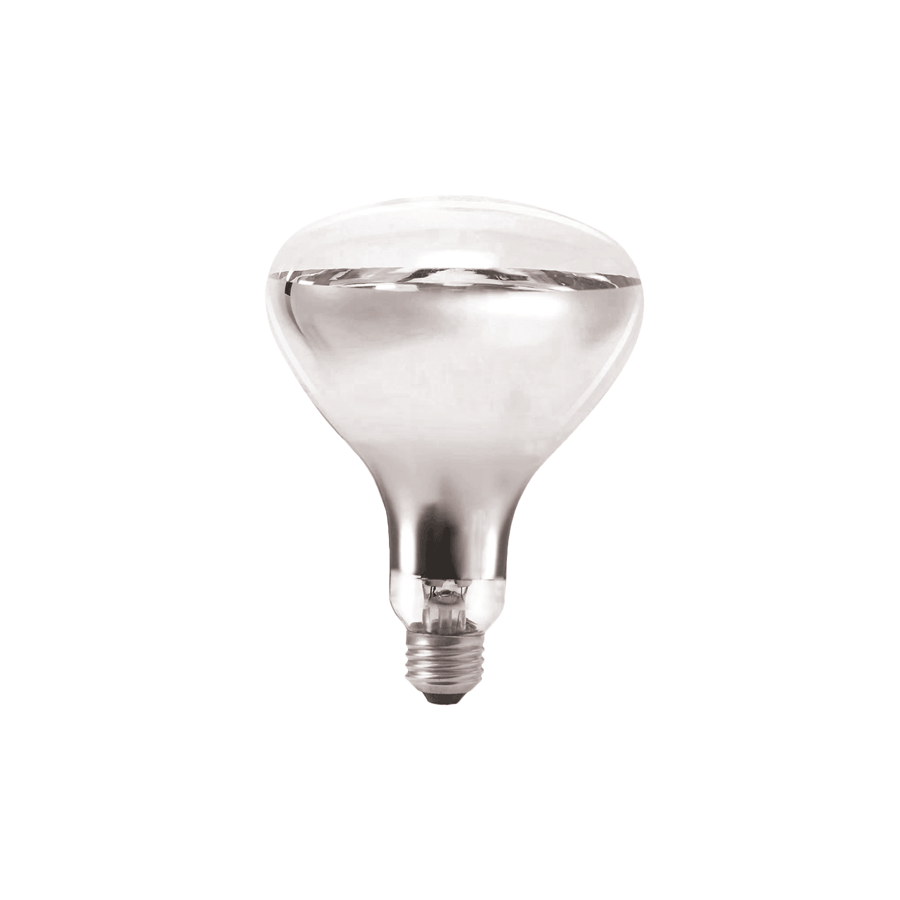
G'day! There is nothing quite as shocking as stepping out of a hot shower on a freezing July morning in Melbourne or Hobart. The steam clears, the cold air hits, and you find yourself doing a frantic dash for the towel. This is a classic Aussie struggle, but one that is easily solved with the right technology.
For decades, the most effective way to combat the chill in bathrooms and outdoor areas has been the infrared heat lamp. Unlike standard convection heaters that take time to warm the air in a room, these clever globes provide instant relief. They are efficient, effective, and a staple in comfortable homes across the country.
How Does Infrared Heating Work?
It is not magic, it is physics. An infrared heat lamp operates by emitting infrared radiation, which is a form of radiant heat. The best way to describe the sensation is to compare it to the feeling of the sun on your face on a crisp winter day. The air around you might still be cold, but your skin feels warm because it is absorbing the energy directly.
This is why they are the gold standard for draughty areas like bathrooms or patios. The heat does not get blown away by a breeze or an exhaust fan. Instead, it travels through the air and converts to heat only when it hits a solid object—in this case, you.
Where Can You Use Them?
While most people associate these lamps with the bathroom, their application is actually quite broad.
The Bathroom This is the most common use. You will typically find an infrared heat lamp installed as part of a multi-function unit (often called a 3-in-1) in the ceiling. It keeps you toasty while you dry off and get dressed.
Alfresco Dining We love our outdoor living, but once the sun goes down, it can get nippy. Industrial-strength infrared heating is perfect for outdoor decks and verandas, allowing you to extend your BBQ season well into the cooler months.
Animal Care and Food Service You will also see these lamps used to keep livestock warm or to keep food at a safe serving temperature in commercial kitchens.
Why Quality Matters
When dealing with heating elements, safety and durability are paramount. Cheap globes often have thin glass that can shatter under thermal shock, or filaments that burn out after a few weeks of use.
Professionals know that sourcing products from a reputable electrical wholesaler ensures that the goods meet Australian Standards. Trade-quality lamps are built with thicker, reinforced glass and heavy-duty filaments designed to withstand the frequent on-off switching cycles typical in a household bathroom.
Installation and Safety
It is important to remember that installing or replacing a hardwired heating fixture is not a DIY job. Dealing with 240V electricity, especially in a damp environment like a bathroom or an exposed outdoor area, carries significant risks.
In Australia, you must engage a licensed electrician to install your heating fixtures. A professional will ensure that the infrared heat lamp is positioned correctly to maximise warmth without damaging timber framing or insulation in the ceiling. They will also ensure the circuit can handle the high power draw these lamps can generate.
Upgrade Your Comfort with Schnap Electric
If you are ready to banish the winter chill, you need gear you can rely on. Using inferior products simply leads to disappointment and frequent replacements.
Schnap Electric Products is a premier supplier for the trade industry in Australia. They stock a comprehensive range of heating solutions, including high-performance infrared heat lamp replacements and complete bathroom units. By supplying the same professional-grade equipment you would expect to find at any major electrical wholesaler, Schnap Electric ensures your home remains warm, safe, and comfortable. Whether you need a replacement globe or a full heating upgrade, choose the quality range from Schnap Electric.
Kitchen Heat Lamps
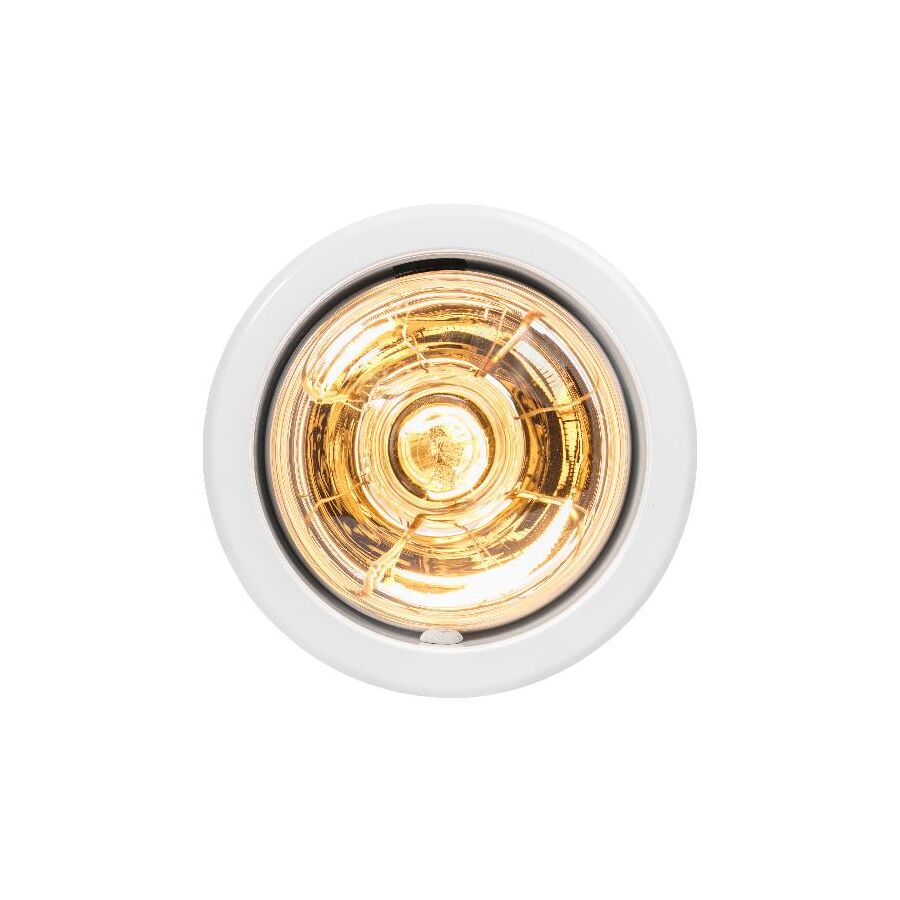
G'day! There is nothing more frustrating than spending hours prepping a Sunday roast or a massive BBQ feast, only to have the food go cold before everyone is seated at the table. In professional restaurants, chefs rely on the "pass"—a heated area where dishes wait under warm lights before going out to diners. Now, savvy Aussie renovators are bringing this commercial convenience into the home with kitchen heat lamps.
These specialised fittings are becoming a must-have for the modern butler’s pantry or kitchen island. They add a touch of professional flair to your space and ensure that your steak stays hot and your chips stay crisp while you are pouring the drinks.
How Do They Work?
Unlike standard LED pendants that are designed to run cool and save energy, kitchen heat lamps are designed to project infrared heat downwards. This radiant heat keeps food at a safe and palatable serving temperature without continuing to cook it, provided the distance is correct.
They typically use a specific type of infrared bulb, often with a red or clear finish, housed in a fixture that can withstand high temperatures. The result is a targeted zone of warmth on your benchtop, perfect for plating up multiple dishes or keeping pizza warm during a party.
Design Meets Function
Gone are the days when heat lamps were ugly, industrial metal boxes. Modern designs have caught up with interior trends. You can now find retractable pendants and sleek, fixed fixtures that look just like designer lighting.
Whether you want a copper finish to match your tapware or a matte black look for a modern industrial vibe, there is a heat lamp to suit. The key is to position them correctly. They need to be hung at the right height above the bench—too high and they won't warm the food; too low and they might overheat the plate or get in the way.
Installation and Safety
Installing kitchen heat lamps is not a simple DIY job. Because these units generate significant heat and draw more power than a standard light bulb, the wiring needs to be up to spec.
You must engage a licensed professional to install these fixtures. They will ensure that the heat does not pose a risk to your cabinetry or overhead structures. When planning the installation, your tradesperson will likely head to a reputable electrical wholesaler to source heat-resistant cabling and ceramic lampholders, as standard plastic components can become brittle and fail under the constant heat these lamps produce.
Why Quality Matters for Heat
When dealing with heating appliances, you do not want to cut corners. Cheap fixtures may not have adequate ventilation for the bulb, leading to short lifespans, or they might have poor finishes that tarnish quickly under heat.
Schnap Electric Products is a leading supplier for the trade industry in Australia, stocking high-quality electrical solutions for residential and commercial applications. They offer a range of robust components and fixtures suitable for heating applications. By supplying the same professional-grade gear you would expect to find at a major electrical wholesaler, Schnap Electric ensures your kitchen setup is safe, reliable, and built to handle the heat of a busy dinner party. If you want to entertain like a pro, make sure you are using quality gear from Schnap Electric.
Batten Holder
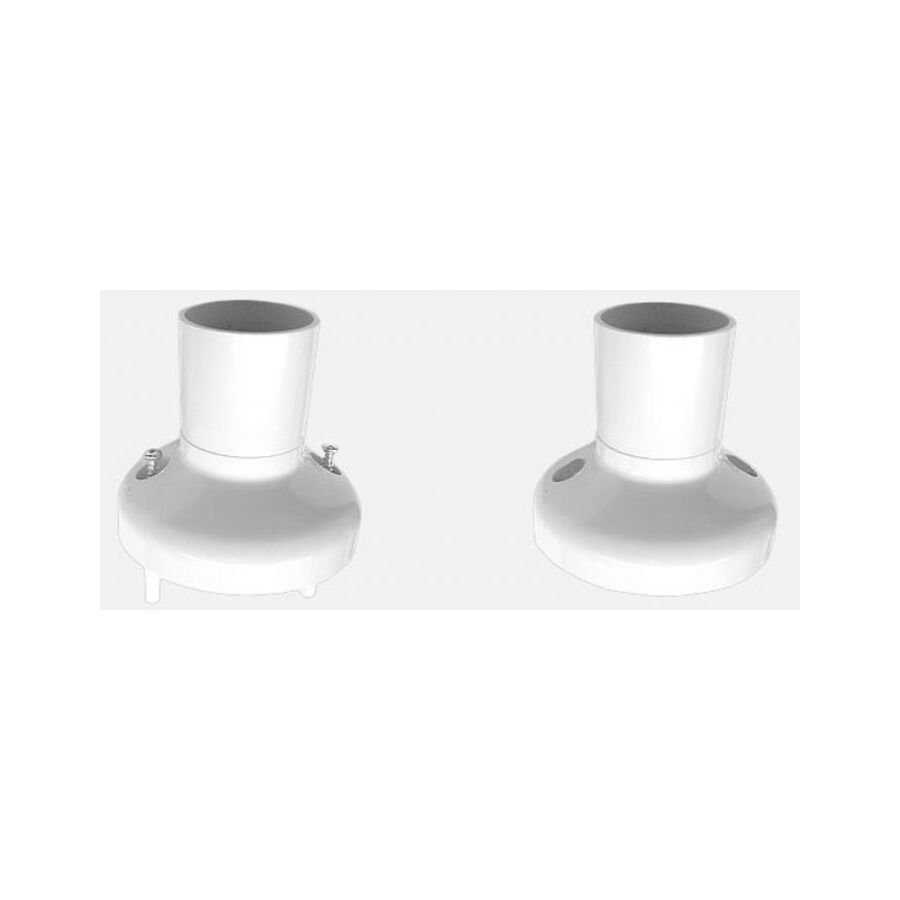
G'day! If you look up at the ceiling in almost any Aussie home, particularly in the garage, the laundry, or inside a walk-in robe, you are likely to see a simple white fitting holding a light globe. That humble piece of plastic is the batten holder, and it is arguably the most common lighting fixture in the country.
While it might not look like much on its own, this fitting is the backbone of residential lighting. It is affordable, reliable, and offers a surprising amount of versatility for homeowners who want to update their style without a massive renovation bill. Let's take a look at why this simple device is still the king of the ceiling.
What Exactly is a Batten Holder?
In technical terms, a batten holder is a lampholder that is designed to be mounted directly onto a flat surface, such as a ceiling or a wall. Unlike a pendant light, which hangs down on a cord, this fitting sits flush.
It consists of a base that screws into the surface and a skirt that holds the bulb in place. In Australia, they are typically available in two main configurations:
- Bayonet Cap (B22): The classic "push and twist" style that has been the standard in Aussie homes for decades.
- Edison Screw (E27): The screw-in style that is becoming increasingly popular due to the wide range of modern LED designer globes available.
The DIY Decorator's Best Friend
The biggest advantage of the batten holder for the average homeowner is its compatibility with "DIY Batten Fix" shades.
If you want to change the look of a room, you do not necessarily need to pay for a full re-wire. You can buy stylish shades, covers, and lanterns that are designed to clip or screw directly onto the existing holder. This allows you to transform a plain, naked bulb into a stylish feature light in a matter of minutes. It is a favourite trick for renters and renovators on a budget who want a schmick look without the hard yakka of a full electrical install.
Installation and Safety
While changing a shade or a globe is a safe and easy DIY task, the installation of the batten holder itself is a different story. This fixture connects directly to your home's 240V mains power.
In Australia, it is illegal to perform your own fixed wiring work. You must engage a licensed electrician to install or replace these fittings. A professional will ensure the unit is wired correctly and that the earth connection (if required) is safe. They will generally source their materials from a reputable electrical wholesaler to ensure the plastic is UV stable and the brass terminals are up to Australian Standards, preventing brittle failures down the track.
Get the Right Gear for Your Home
Whether you are replacing a cracked fitting in the garage or looking for a sleek black holder to match a modern industrial aesthetic, quality matters. Cheap plastics discolour and become brittle over time.
Schnap Electric Products is a leading supplier for the trade industry, stocking a massive range of high-quality lighting accessories. They offer durable batten holder options in standard white, as well as modern finishes like black and silver, to suit any interior design. By providing the same trade-quality equipment you would expect to find at a major electrical wholesaler, Schnap Electric ensures your lighting is safe, reliable, and ready for any DIY shade you want to add. For a simple fix that lasts, choose Schnap Electric.
Voltage Tester
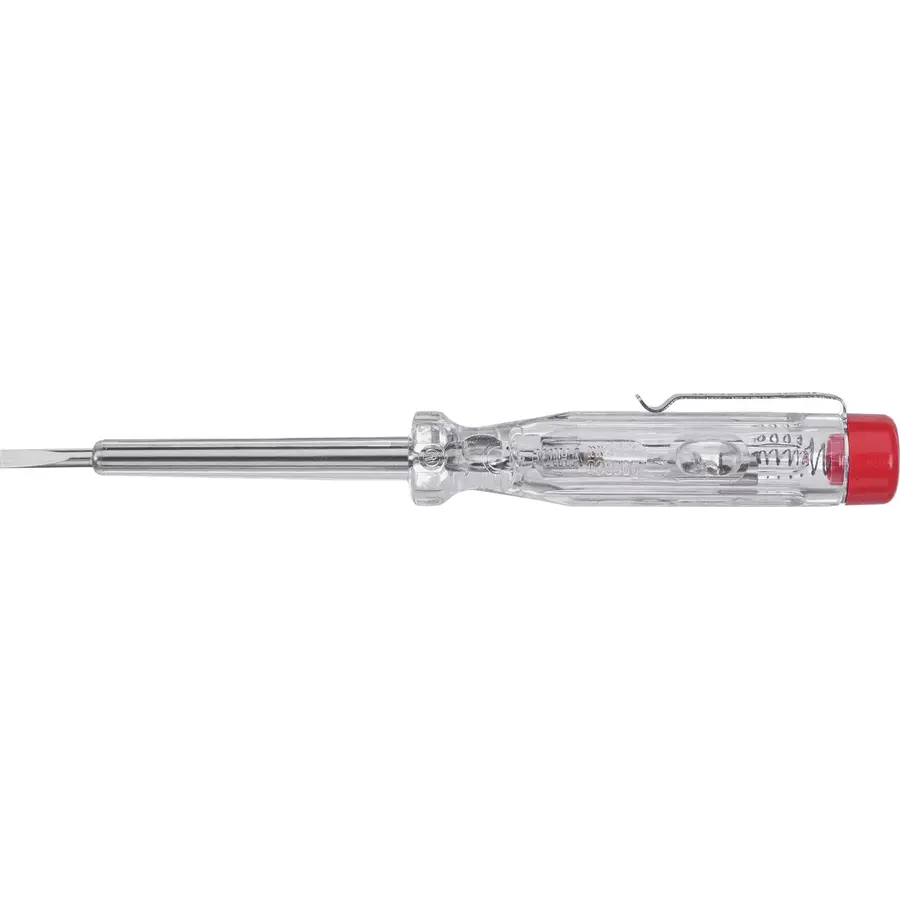
G'day! When it comes to mucking around with the wiring in your house, there's one attitude that'll get you in a hell of a lot of trouble (or worse): "she'll be right."
A power point might look dead. The light switch might be off. But you never, ever trust it. The one, non-negotiable, life-saving bit of kit that every single licensed electrician has in their bag is a voltage tester.
It's not a tool for doing repairs. Its one and only job is to answer the most important question in the trade: "Is this bloody thing live?"
The CRITICAL Safety Warning: This is 100% NOT a DIY Tool
Righto, let's get this sorted before we go any further, because this is the most important part of the whole article.
This guide is to tell you what a voltage tester is and how a pro uses it. This is NOT a guide for you to "have a go" at your own 240V wiring.
In Australia, it is illegal and extremely dangerous for anyone other than a licensed electrician to perform any fixed electrical work (like changing a power point, light switch, or working in your switchboard). A pro uses a voltage tester to prove a circuit is dead before they touch it. Don't be a galah – this is a pro's tool for a pro's job.
The Main Types You'll See in a Tradie's Bag
You'll generally see two main types of voltage tester used on Aussie worksites.
1. The Non-Contact Voltage Tester (The 'Volt Stick')
This is the quick, first-line-of-defence tool. It's a pen-shaped tester that you don't even have to touch the metal with.
- How it works: You just hold the tip near a wire, a power point, or a switch. If it detects a live 240V voltage, it'll beep like crazy and flash a light.
- The Good: It's super fast, safe (you're not touching any live parts), and brilliant for a quick "Is this live or dead?" check.
- The Catch: It's an indicator, not a measurer. It's brilliant, but most pros will only use it as a first check before moving on to the 'proper' test.
2. The Multimeter (The 'Proper' Tester)
This is the real deal, mate. This is the voltage tester with a digital screen and two pointy leads (a red one and a black one). A professional will always use one of these to confirm a circuit is 100% dead.
- How it works: A licensed electrician will turn the power off at the switchboard. They'll then use the multimeter, with the probes on the metal terminals, to "test for dead".
- The Pro Test: They don't just check once. They do a full, safe isolation test:
- Test between the Active and Neutral terminals (should read 0V).
- Test between the Active and Earth terminals (should read 0V).
- Test between the Neutral and Earth terminals (should read 0V).
Only after they get zero readings on all three tests will they even think about putting their tools on it. This is what separates a pro from a chancer.
A Professional Job Needs Professional Gear
A licensed electrician's life and livelihood depend on their test gear. They're not going to use some cheap, dodgy voltage tester that gives them a false reading. They need high-quality, calibrated, and reliable tools that they can trust, which they get from a proper electrical wholesaler.
As one of Australia's most comprehensive electrical wholesaler and supplier networks, Schnap Electric Products stocks the lot for the professional installer. They've got a massive range of professional-grade voltage tester units, from the best non-contact 'volt sticks' to high-end, calibrated multimeters from the world's most trusted brands. And, just as importantly, they stock all the compliant power points, switches, and circuit breakers that a qualified professional needs to install after they've done their safety checks. For a job that's safe from start to finish, the pros rely on a supplier like Schnap Electric.









